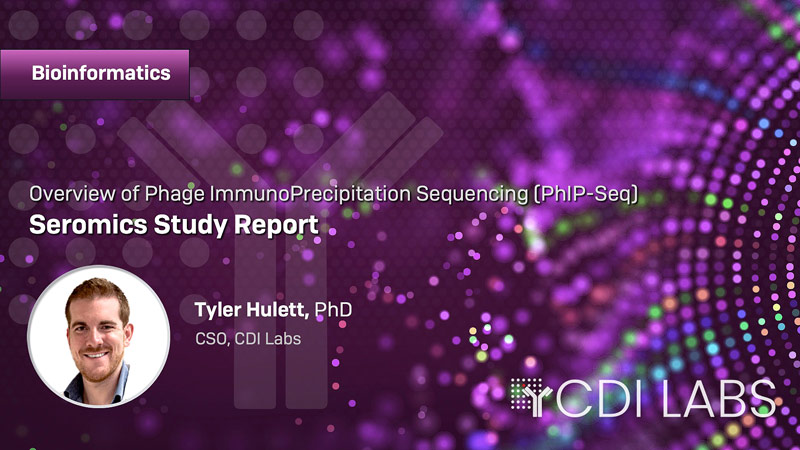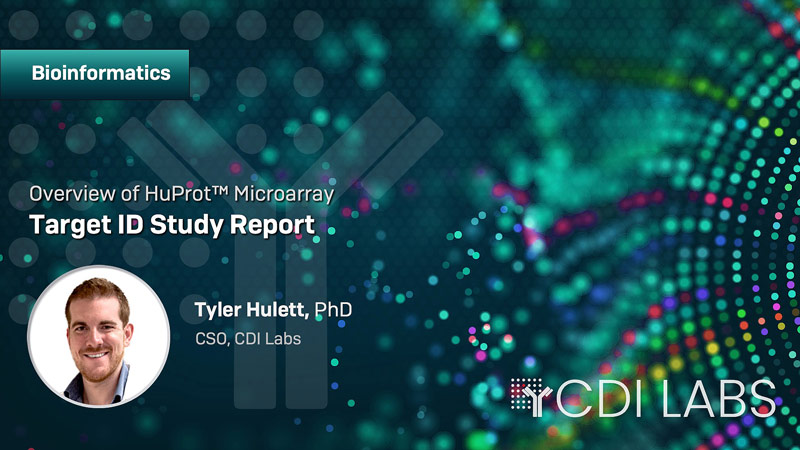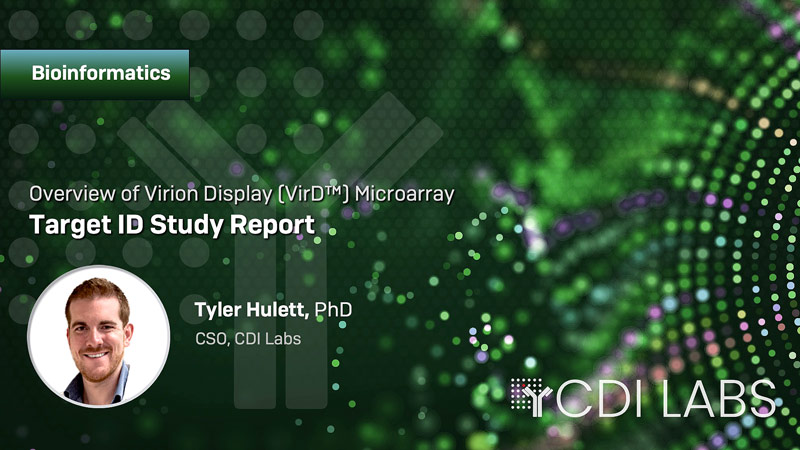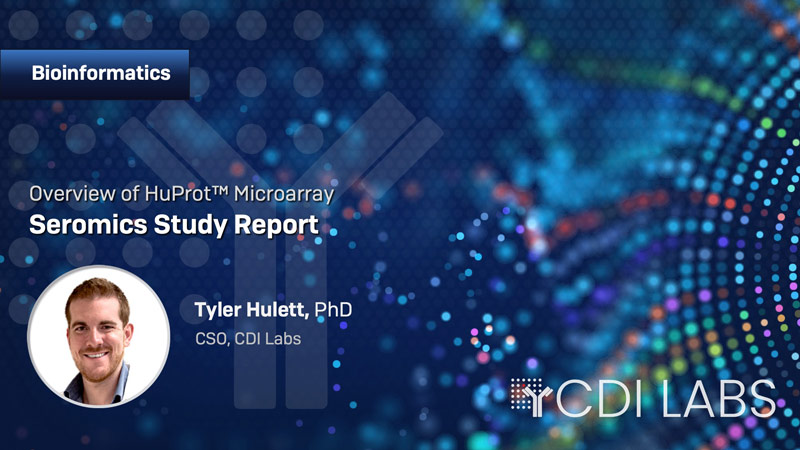- Follow Us
CDI Labs
Bioinformatics
We provide a streamlined, comprehensive and transparent analysis pipeline to fulfill all your bioinformatic needs.
REQUEST INFOUnlock the Full Potential of Your Data with Insightful Reports and Personalized Guidance
A streamlined, comprehensive and transparent analysis pipeline, guided by bioinformaticians with deep expertise in protein microarray and PhIP-Seq data analysis
We believe that quality bioinformatics is a critical component of reliable, reproducible, and impactful biological and biomedical research. Our mission is to foster trust in our platforms by delivering comprehensive and transparent reports that empower our customers to fully realize the value of their studies. Our bioinformatics team has analyzed thousands of autoantibody profiling, viral antibody profiling and target identification data sets, which have contributed to hundreds of peer-reviewed publications by our customers.
CDI Labs Difference
- All reports include extensive assay-specific QA/QC performance information.
- Data summaries quickly point out the most obvious features of your study.
- Extensive documentation of methods, tools, and statistics ensure that the conclusions can be reproduced and independently verified.
- Accessibility at any level of informatics expertise. Directly use our publication-ready statistical conclusions or we’ll guide you to create your own from-scratch analysis using your raw data.
Ensuring the Integrity of Raw Data is Essential
Standard operating procedures and a strong quality control process ensure the authenticity of raw data entering the analysis pipeline
HuProt
Our entire HuProt collection has been sequence-verified and we include proof the proteins were successfully made and printed with an anti-GST positive control array run for your assay. Assay-specific false-positives are removed using a secondary-only negative control array run for your assay. The integrity of each and every array used for your study is confirmed using replicate spot pairs – with tight correspondence of >99% of all datapoints on an array.
PhIP-Seq
Internal to each assay are mock-immunoprecipitation samples – we sequence them to >100x coverage of your input library to prove the phages are there. We generate correlation plots to demonstrate the input library is balanced, and control triplicates to prove assay reproducibility. We use paired-end sequencing to assure all counted peptides are full-length and unmutated.
VirD
Our entire VirD collection has been sequence-verified and we include proof the virions were successfully made and printed with an anti-gD positive control array run for your assay. Assay-specific false-positives are removed using a secondary-only negative control array run for your assay. The integrity of each and every array used for your study is confirmed using replicate spot pairs – with tight correspondence of >99% of all datapoints on an array.
Autoantibody Profiling Data
Autoantibody seromics data is distinct from more common data types, such as protein and gene expression data. For example, the HuProt™ Human Proteome Microarray includes over 21,000 proteins, yet a middle-aged individual typically has autoantibodies targeting only about 1–2% of these proteins. Unlike gene expression data, autoantibody seromics lacks baseline levels or patterns of upregulation and downregulation to analyze. Additionally, in comparative studies, the prevalence of autoantibody binding across a sample set is often as important, if not more so, than the raw signal intensity of a few specific autoantibody binding events. We have extensive experience with seromics data from both microarrays and PhIP-Seq assays, and we will guide you through the best practices for data analysis.
Comparative Analysis Options
Autoantibody Seromics Study Reports for HuProt and PhIP-Seq provide for whatever type of group or cohort analysis you need.

Autoantibody Seromics Report
Our HuProt and PhIP-Seq Seromics Study Reports provide a thorough and methodical walkthrough of how raw data is generated, quality checked and analyzed. The table below shows the autoantibody profiles generated with HuProt for a case of Scleroderma patients (CENPB) versus cohort (all other samples). The raw data plot highlights the reactivity of the individual Study Groups to centromere protein B – a known autoantigen.
For a comprehensive walk through of the data deliverables and an overview of the analysis pipeline, please view the HuProt and PhIP-Seq Study Report Overview Videos below.

Hit Calling Process
- Z-Score (log2) used to clearly sort top interactors for each sample.
- Secondary-only negative control used to prove true-positives.
- Outputs can be blinded, case versus control, or case versus cohort for up to 12 independently defined groups per report.
- Simple Fisher exact tests used to define top outlier proteins for each serum cohort.
- Plots of all top outliers shown for individualized raw array data.
Target ID Report
Our Target ID Study Reports provide a thorough and methodical walkthrough of how raw data is generated, quality checked and analyzed. The hit calling table below is an example of the top hit list for a single sample in a HuProt Target ID Study Report.
For a comprehensive walk through of the data deliverables and an overview of the analysis pipeline, please view the Study Report Overview Videos below.

Hit Calling Process
- Foreground median fluorescence intensity (MFI) - average spot pairs with no background subtraction.
- Log2 transform the raw MFI data - no normalization.
- Use secondary-only negative control array to remove false-positives.
- Hits >4-fold over secondary-only for that feature AND Z-Score >3 on log2 raw data.
Study Report Overview Videos
A step-by-step overview of 4 Study Reports - topics include a workflow overview, description of data file deliverables, and a detailed summary of data and statistical analysis methods.
HuProtT™ and Seromics
WATCH VIDEO
PhiP-Seq and Seromics
WATCH VIDEO
HuProt™ and Target ID
WATCH VIDEO


